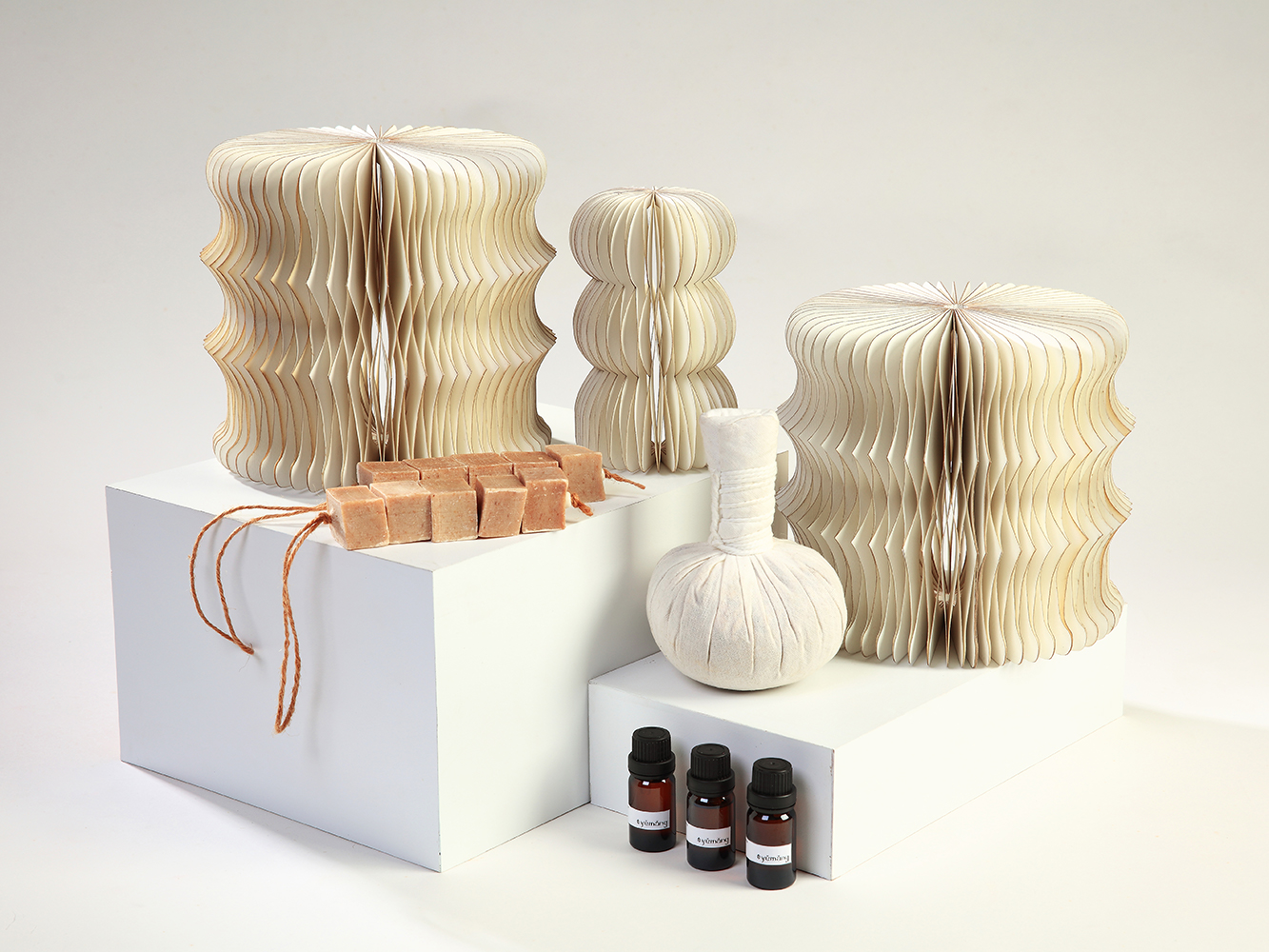
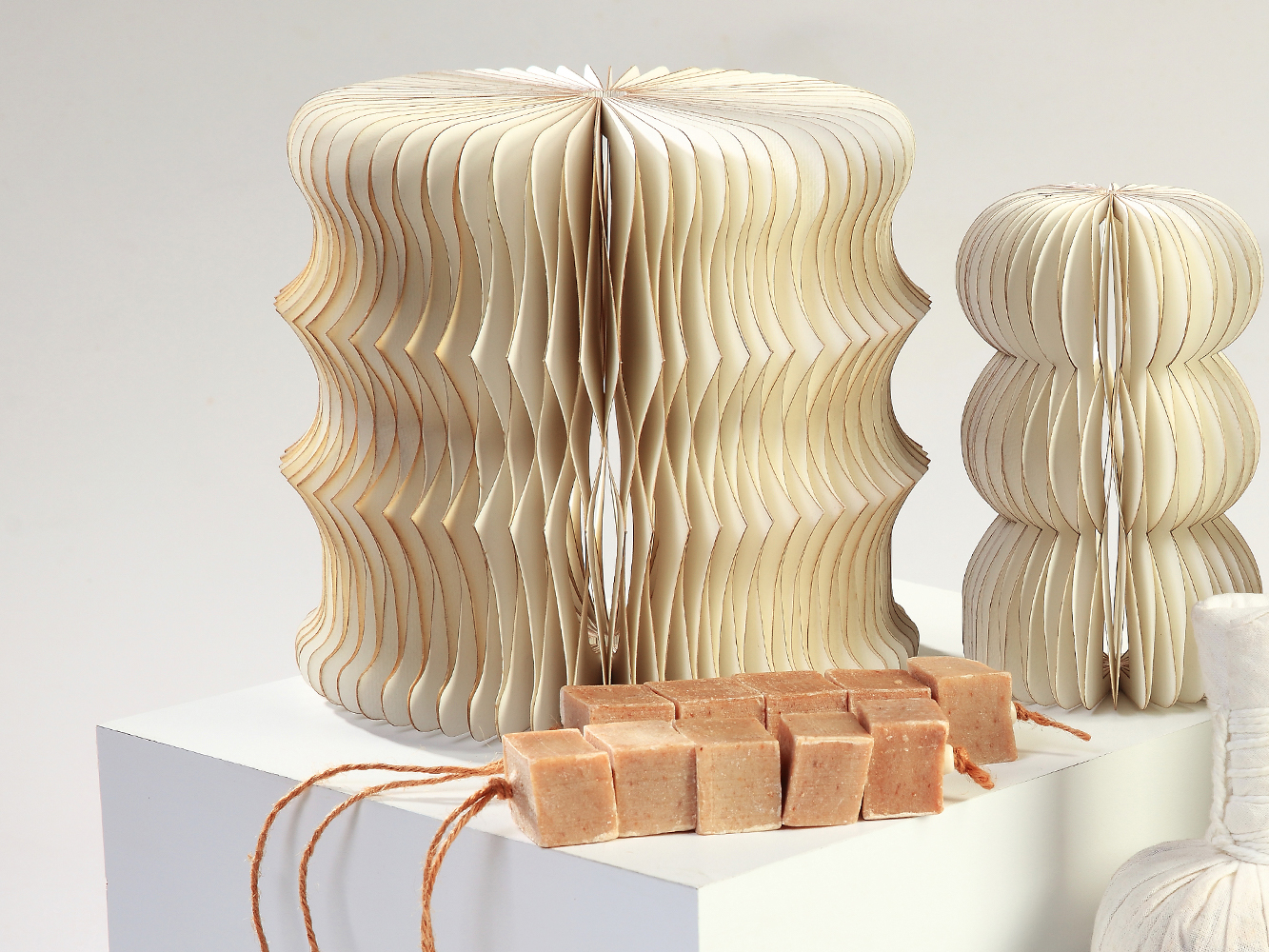
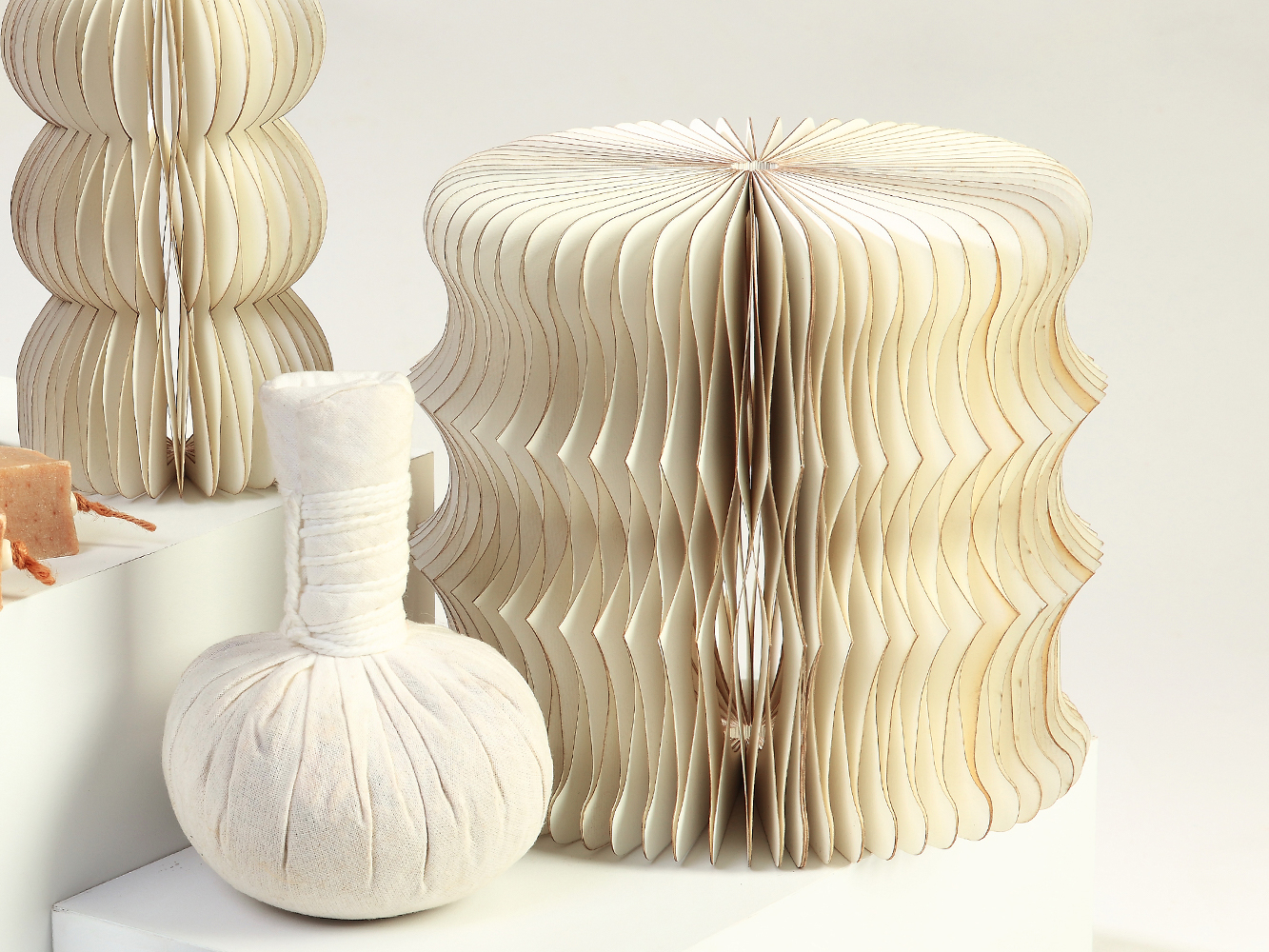
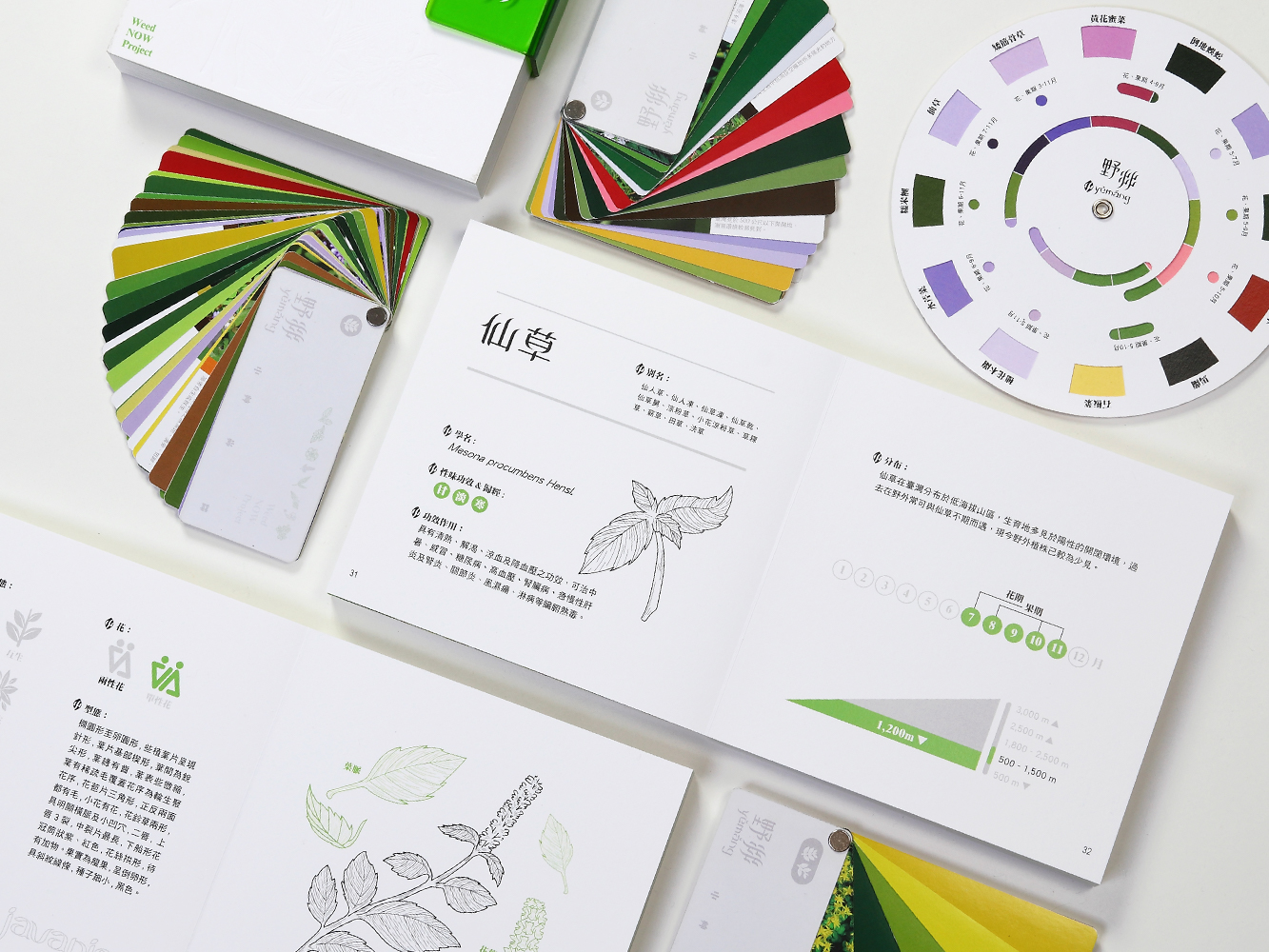
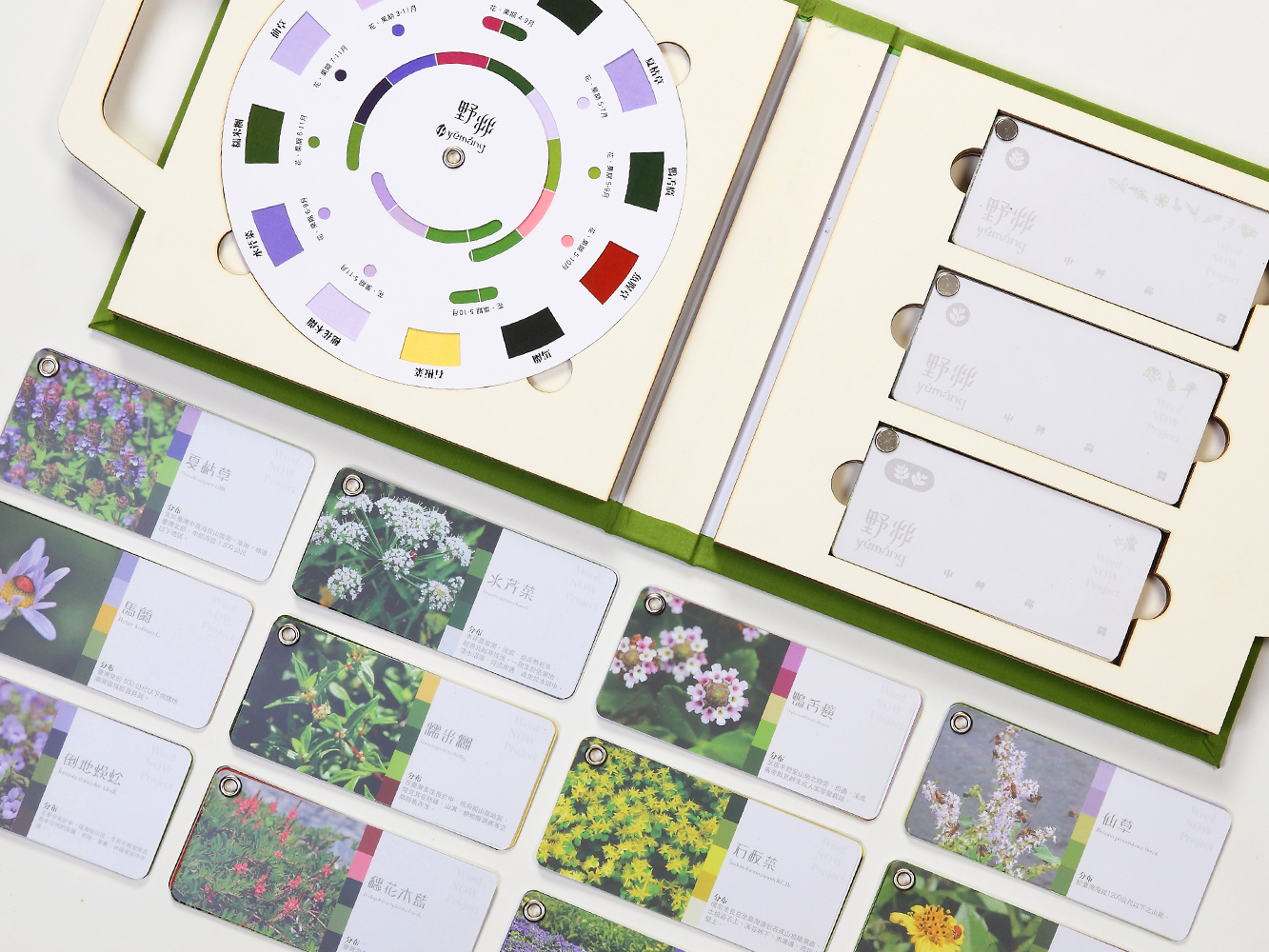
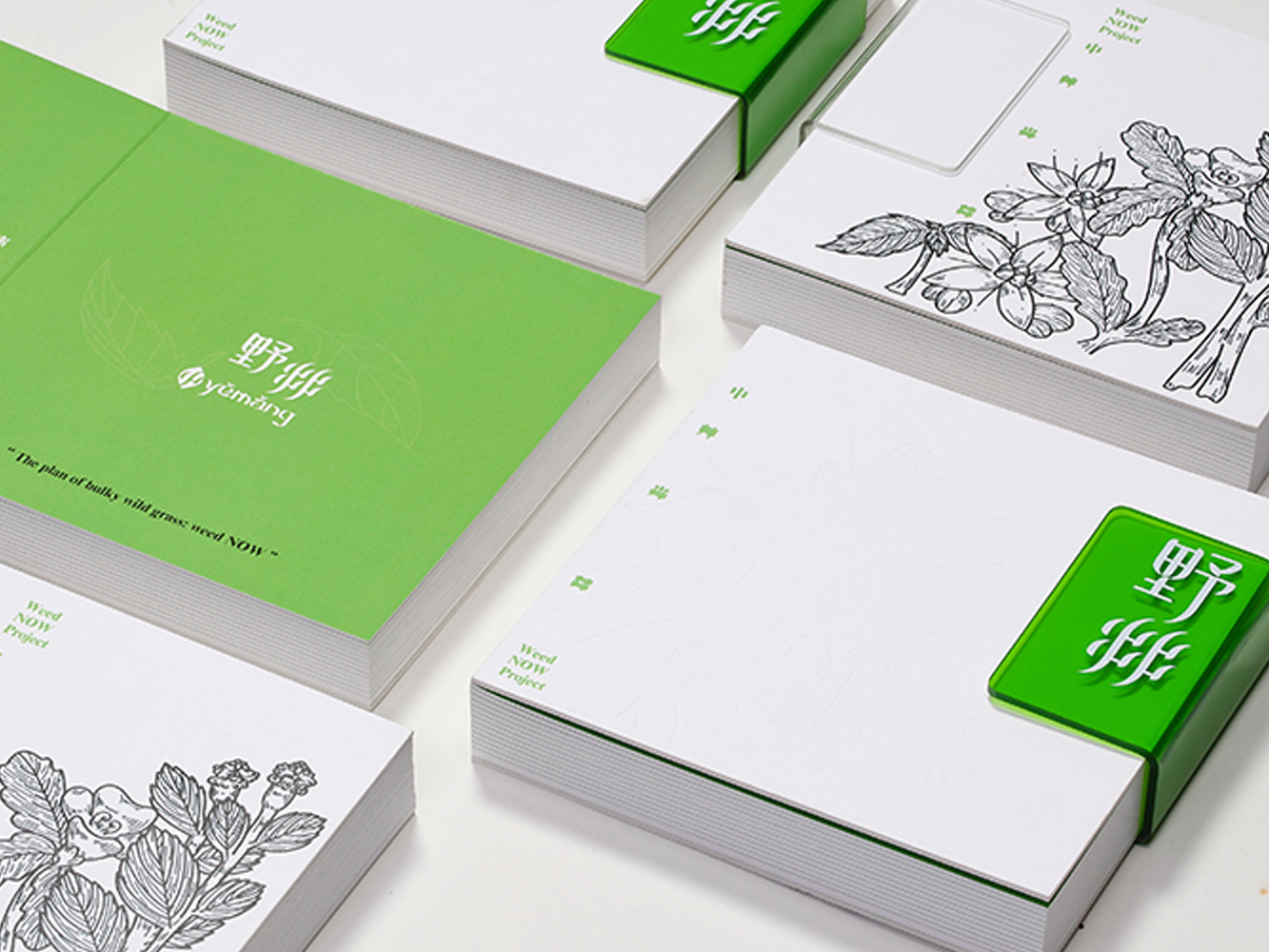
以十二種臺灣原生雜草花為主要元素,擷取其植物生長的特殊性,將主題命名為「野茻」草NOW計畫,進而傳達生態文化產業共榮共好的循環經濟概念。早期在臺灣這片肥沃的土地上,有著極具豐富且多樣化的生態系統樣貌,原生雜草是多樣昆蟲生物的棲息之地,花開更是誘蝶與蜜源的採集之處,草會隨著季節成長而變化,花也會此起彼落而綻放,營造出循環永續的生態圈。一般非刻意栽種的植物叫做野草;不需特別栽培而自行大量繁殖的植物稱之為雜草。在這些臺灣原生的雜草花中,部分是過去人賴以維生的食材,提供智慧傳承、民俗傳統保健用途;或者是綠美化環境景觀的植被,提供陶冶身心、怡情休閒療癒用途。透過實地田野調查與訪談進行探究,並鎖定在高雄三鳳宮青草街上鄰近的傳統青草茶文化產業,實際約訪具特色傳承多代的青草店家和主要的靈魂人物,記錄了青草職人他們堅韌屹立不搖的精神,以持續傳遞老祖宗食用的智慧與應用的價值。有鑑於此,從設計素材選擇、載體運用、插畫表現其農產業文化特色的輪廓,整體開發出記錄圖誌手冊、採擷小卡及青草皂與草球等相關設計促成物件,藉由推廣生產、生態知識文化,推動融入生活教育之中,能實踐體驗親手做的食農教育之意義。
The study was done with 12 native weed flowers as the main element, retrieved the particularity of plant growth, and named the subject “The plan of bulky wild grass: weed NOW,” further conveying the concept of circular economy with intergrowth and co-prosperity in the ecological and cultural industry.
In the early days, the fertile land of Taiwan was home to an incredibly rich and diverse ecosystem. Native wildflowers served as habitats for a wide range of insect species, while their blossoms were a source of nectar for pollinators like butterflies. These plants would grow and change with the seasons, leading to a continuous and sustainable ecological cycle.
Wild grass typically refers to plants that grow without deliberate cultivation, while weeds are those that proliferate abundantly without specific care. Among these native weed flowers in Taiwan, some have historically served as essential food sources, carrying the legacy of traditional wisdom and cultural practices. Others contribute to environmental beautification, offering opportunities for relaxation and rejuvenation, enhancing mental and physical well-being.
Through on-site field research and interviews, this exploration focused on the traditional green herbal tea culture industry near Green Herbal Street, adjacent to San Feng Shrine in Kaohsiung. The study involved visiting unique green herbal tea shops with multi-generational heritage and key individuals in the field. It documented the unwavering spirit of these green herbal artisans as they continue to pass down the wisdom of their ancestors in the culinary and practical applications of green herbs.
Because of this, the project involved the selection of design materials, utilization of various mediums, and the use of illustrations to capture the essence of the agricultural culture. This comprehensive approach led to the development of illustrative guidebooks, collectible cards, and small gifts, among other related designs. The goal was to promote agricultural production and ecological cultural knowledge while integrating these aspects into life education. The intention is to emphasize the significance of hands-on experiential food and agriculture education.